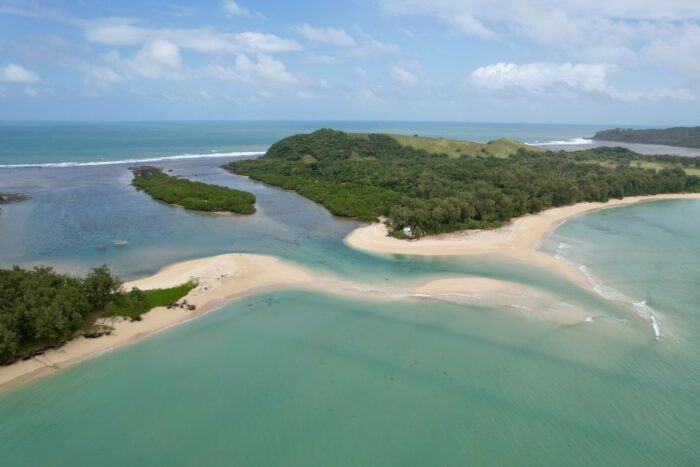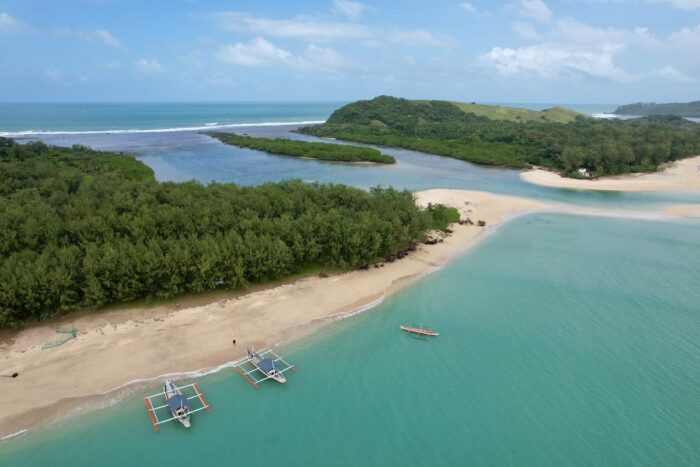Out of Town Blog
Apuao Pequeña Island: Camarines Norte’s Hidden Gem
Apuao Pequeña Island: Unveiling the Hidden Gem of Camarines Norte
Apuao Pequeña Island is a hidden gem in the province of Camarines Norte, Philippines. The island is known for its pristine white sand beaches and crystal-clear azure waters. Apuao Pequeña is a part of the Mercedes Group of Islands, often referred to as the Siete Pecados.
An idyllic destination, Apuao Pequeña offers a peaceful escape for travelers. It is a serene beach experience away from the more crowded tourist spots.
The island is not only favored for its scenic landscapes but also for its unique ecosystem. A small forest area provides a habitat for local fruit bats, introducing a subtle yet fascinating wildlife encounter for visitors. This tranquil environment is a rarity, making Apuao Pequeña a notable location for eco-tourists and those looking to connect with nature.
Apuao Pequeña’s quiet shorelines and the gentle, rhythmical lapping of the waves present an ideal setting for relaxation. It affords guests the luxury of basking under the sun with minimal disruptions, punctuated only by the occasional flight of fruit bats. This little-known haven is accessible through a boat ride, part of an island-hopping tour that promises an intimate brush with natural beauty.
Geography
Apuao Pequeña Island boasts a distinctive geographic identity shaped by its location, topography, and unique climate patterns.
Location
Apuao Pequeña is situated in the Mercedes archipelago, part of the Camarines Norte province in the Philippines. It lies off the northeastern coast of Luzon and is accessible via boat from the port town of Mercedes.
Topography
The island is characterized by its white sandy beaches and a central forest area home to a variety of wildlife, including fruit bats. Its landscape is relatively flat with an array of coastal vegetation and pine trees, providing a picturesque setting against the clear, turquoise waters.
Climate
Apuao Pequeña experiences a tropical climate with two primary seasons. The dry season typically runs from November to May, while the rainy season spans from June to October, coinciding with the general climate patterns of the Bicol Region.

History
Apuao Pequeña Island’s history is shaped by early settlers and its strategic significance over the centuries.
Early settlement on Apuao Pequeña Island consisted primarily of indigenous…
Click Here to Read the Full Original Article at Out of Town Blog…
